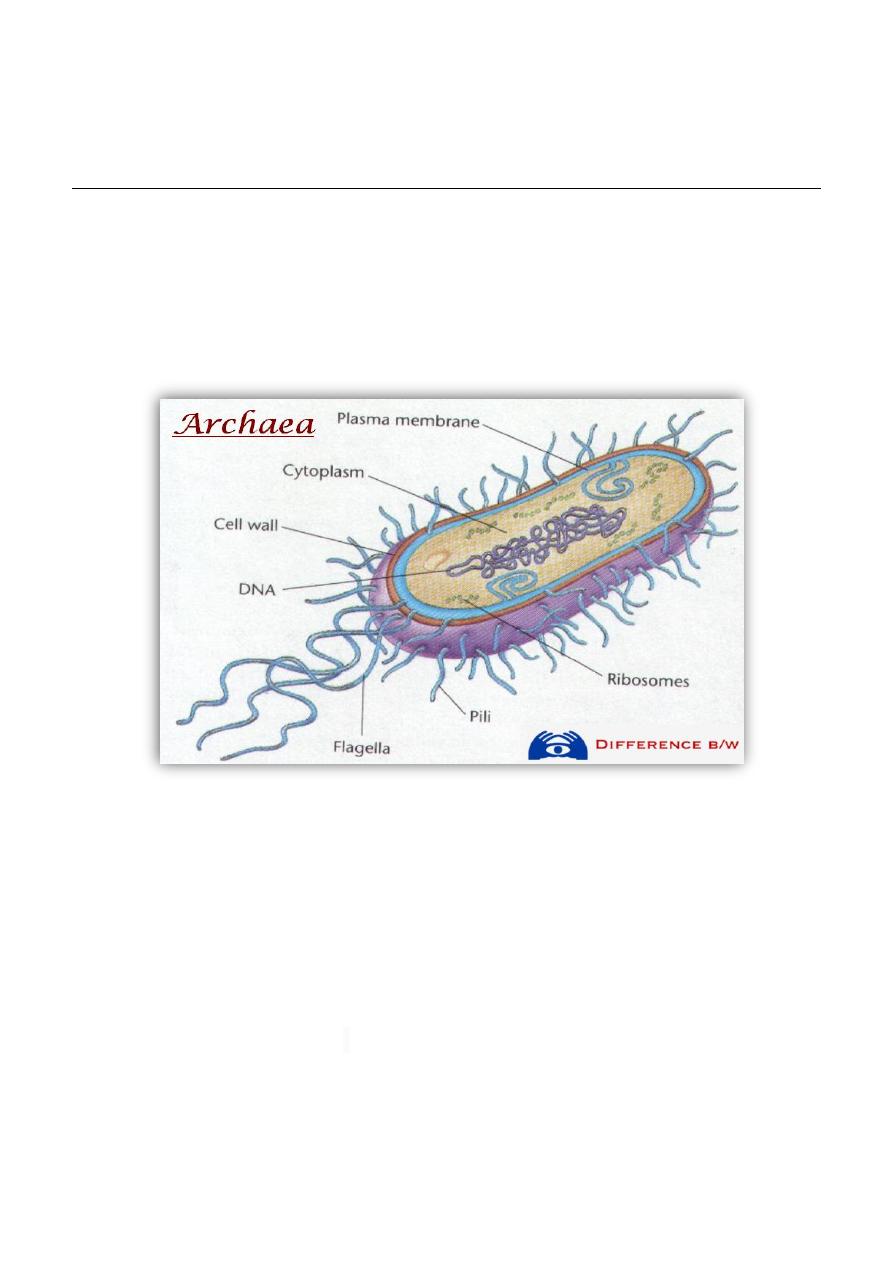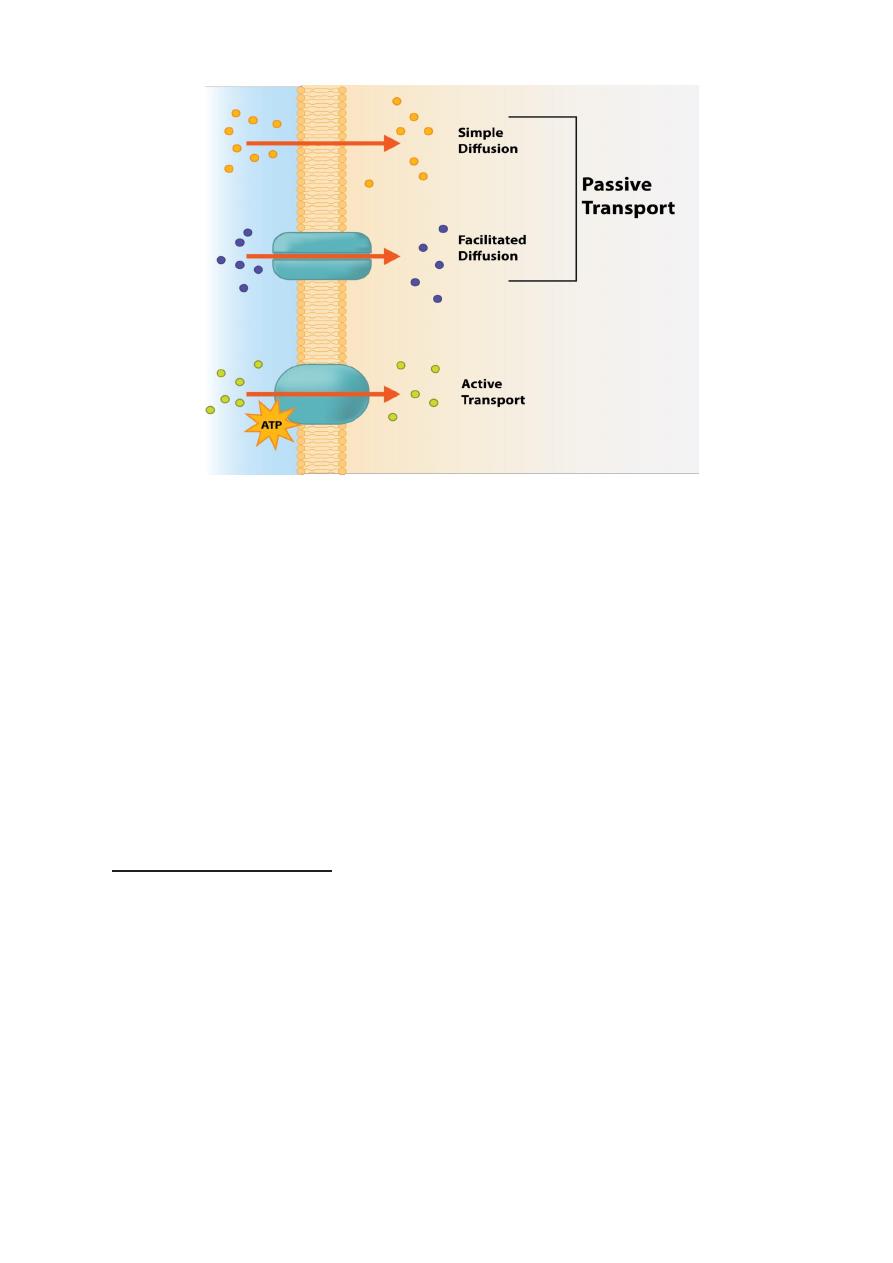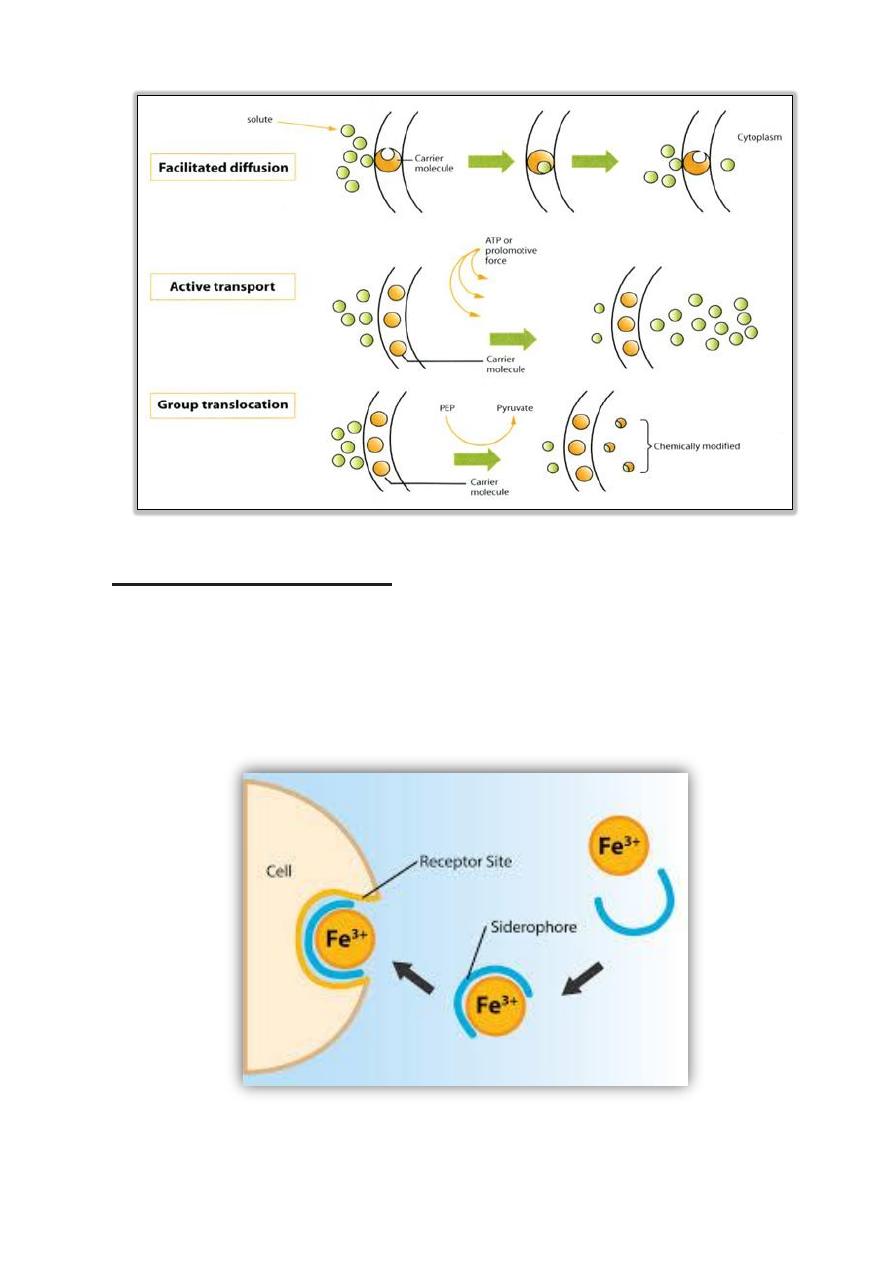
1
Course: Microbial Physiology
Lecturer: Dr. Weam Saad
Lecture: Microbial Structure and functions
Archaebacteria:
In the past, archaea were classified as bacteria and called archaebacteria. But
it was discovered that archaea have an evolutionary history and special
biochemistry than bacteria.
Examples for Archaebacteria:
Examples of archaebacteria include the halophiles, the methanogens and the
thermophiles. The halophiles are found in high salt conditions. This includes lakes
and seawater. The methanogens produce methane and are found in the intestines
of ruminants and in sewage treatment. Thermophiles are found in environments
with high heat, such as in springs. E.g. Methanibrevibacter smithii found in human
gut and functions without oxygen. It converts CO2 to methane and is important in
the breakdown of nutrients.
Thermococcus litoralis live in deep-sea and high
temperatures.

2
Archaea
Bacteria
Introduction
The Archaea represent a
kingdom of single-celled
microorganisms. These
microbes are prokaryotes,
they have no cell nucleus
or any other membrane-
bound organelles.
Bacteria constitute a large kingdom
of prokaryotic microorganisms, a
few micrometres in length, bacteria
have many of shapes, cocci to rods
and spirals.
Cell Wall
Pseudo-peptidoglycan
Peptidoglycan /
Lipopolysaccharide(LPS)
Habitat
Extreme and harsh
environments like hot
springs, salt lakes,
marshlands, oceans, gut
of ruminants and
humans.
Everywhere, they are found in soil,
hot springs, radioactive waste water,
Earth's crust, organic matter, bodies
of plants and animals etc.
Growth and
Reproduction
Archae reproduce
asexually by the process
of binary fission, budding
and fragmentation.
Bacteria reproduce asexually
through binary fission, budding,
fragmentation.
Ribosomes
Present
Present
Plasmid
Present
Present
Endospores
Absent
Present
Appendages
Pili and different flagella
in chemical composition
Flagella and pili
Nutrients, Metabolism, Growth, Survival, and Death of Bacteria:
1. Nutrients:
Plasma membrane plays a majore role in nutrients supply to bacteria,
The major
functions of the cytoplasmic membrane are (1) selective permeability and
transport of solutes; (2) electron transport and oxidative phosphorylation in
aerobic species; (3) excretion of hydrolytic exoenzymes; (4) carrying the
enzymes and carrier molecules that function in the biosynthesis of DNA, cell

3
wall polymers, and membrane lipids; and (5) carrying the receptors and other
proteins of the chemotactic and other sensory transduction systems.
1. Permeability and transport:
The cytoplasmic membrane forms a hydrophobic barrier impermeable to most
hydrophilic molecules, several mechanisms (transport systems) that enable the
cell to transport nutrients into inside and waste products outside of the cell. These
transport systems work against a concentration gradient to increase the
concentration
of nutrients inside the cell, this function that requires energy.
There are three general transport mechanisms involved in membrane transport:
passive transport, active transport, and group translocation.
a. Passive transport: This mechanism depends on di
ffusion, no need for energy,
and happen only when the solute is at higher concentration outside bacterial cell
than inside the cell. Simple diffusion transports nutrients, including dissolved
oxygen, carbon dioxide, and water. Facilitated diffusion also no need for energy,
facilitated di
ffusion is selective. Channel proteins form selective channels that
facilitate the passage of specific molecules. Facilitated di
ffusion is common in
eukaryotic microorganisms (eg, yeast) but is rare in prokaryotes. Glycerol is one
of the compounds that enters prokaryotic cells by facilitated di
ffusion.
b. Active transport: Many nutrients are concentrated more than a thousand fold as
a result of active transport. There are two types of active transport mechanisms
depending on the source of energy used:
1) Ion-coupled transport. Move a molecule across the cell membrane at the
expense of a previously established ion gradient such as protonmotive or
sodiummotive force. It is common in aerobic organisms
,
approximately
40% of the substrates transported by E. coli use this mechanism.

4
2) ATP binding cassette (ABC) transport. This mechanism uses ATP
directly to transport solutes into the cell. In gram-negative bacteria, the
transport of many nutrients is facilitated by specific binding
proteins
located
in
the
periplasmic
space;
in
gram-positive
cells, the binding proteins are attached to the outer surface of
the
cell
membrane.
These
proteins
function
by
transferring
the
bound
substrate
to
a
membrane-bound
protein
complex.
Hydrolysis of ATP release energy used to open the membrane pores and
allow the movement of the substrate into the cell. Approximately 40% of the
substrates transported by E coli use this mechanism.
c. Group translocation:
also called (vectorial metabolism), change occur in the
substrate during movement, substrate is phosphorylated during the transport
process, coupling transport with metabolism. (e.g, glucose and mannose sugar
transport systems). They are called phosphotransferase systems and involved
in movement toward sugars as carbon sources (chemotaxis) and in the
regulation of several other metabolic pathways.

5
d. Special transport processes: Iron (Fe) is an essential nutrient for the growth
of almost all bacteria. Under anaerobic conditions, Fe is generally in the +2
oxidation state and soluble, under aerobic conditions, Fe is generally in the +3
oxidation state and insoluble. The animals contain use transferrin and
lactoferrin to transport Fe. Some bacteria have siderophores (compounds that
transport Fe as a soluble complex to inside bacterial cell, eg. (–CONH2OH).

6
2. Electron transport and oxidative phosphorylation: The cytochromes and
other enzymes and components of the respiratory chain, including
dehydrogenases, are located in the cell membrane. The bacterial cell membrane
is similar to mitochondrial membrane.
3. Excretion of hydrolytic exoenzymes and pathogenicity proteins: All
organisms depend on macromolecular organic polymers as a source of nutrients
(eg, proteins, polysaccharides, lipids) excrete hydrolytic enzymes that
degrade these polymers to small subunits small to penetrate the cell membrane.
Bacteria (both gram positive and gram negative) secrete them directly into the
external medium or into the periplasmic space between the peptidoglycan layer
and the outer membrane of the cell wall in the case of gram-negative bacteria.
4. Chemotactic systems: Attractants bind to specific receptors in the bacterial
membrane. There are at least 20 di
fferent chemoreceptors in the membrane of
E coli, some of them also function as a first step in the transport process.
